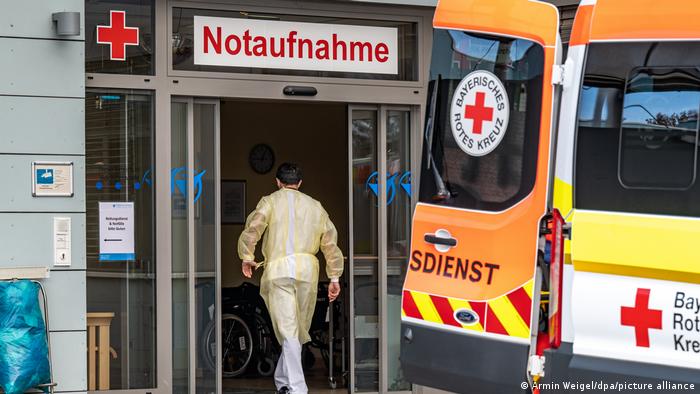

DW.com
If you were to consider the official numbers and the facts they point to at this point in time, then here’s what you need to know about Germany and its Coronavirus situation:
As of November 19, 2021- there have been no fewer than 5,261,963 COVID 19 cases in Germany. Of these many cases, there have been around 99,280 deaths or casualties if one were to put it like that. At the same time, however, there have also been over 4,50,000 recoveries in COVID 19 cases in Germany.
It is only in the recent times, specifically from October-end onwards that the general state of affairs in Germany have begun to nosedive where the new COVID cases stand reminding one and all of the anxieties associated with the infectious virus of the past.
What’s most surprising though is that after enduring an enormity of struggle with COVID 19, a period of time where Germany faced horrid lockdowns, the ramification of which was a decline in economic activity, the same situation is back.
That’s not to say that the worst is over for a country that would surely have liked some form of reprieve as it anxiously gazes at the most vital question at this time:
Who will become the next chancellor and hopefully, continue Germany’s surge toward a brighter, bigger future?
But just when the country would have liked to move on and progress into the realm of the future, it finds itself struck by a new surge in COVID 19 cases.
So the following can help explain better as to where the COVID 19 situation stands currently in Deutschland, with the inputs taken from Dw.com:
In the past two weeks, the number of new cases has jumped by more than 60%.
On Friday, Germany recorded 52,970 daily new infections, a day after registering over 65,000 daily cases, a record since the start of the pandemic. Health officials are warning that the number is likely to at least double in the coming days.
Uwe Janssens, secretary-general of the German Society for Internal Intensive Care, told DW the numbers were “absolutely worrying.”
He pointed out that patients who suffer severe disease after getting infected with the virus end up in the intensive care unit much later, “with a delay of up to 15 days.”
“Currently, around 0.8% of infected people will have to be treated further in an intensive care unit during the course of an infection,” he said. And if there are 50,000-60,000 new infections a day, “you can count how many people will reach the intensive care units in 7 to 10 to 12 days.”
Moreover, there’s been a new system that’s been put into place that helps in ascertaining one’s COVID score. It’s called the 2G system. So what is it about? Here’s what DW.com had to say:
According to that metric, if more than three inhabitants per 100,000 in a region are hospitalized with COVID, the “2G” rule will apply for all public leisure activities in a given state — referring to the shorthand in Germany for a rule that allows freedoms like access to restaurants and hotels only to those who are either vaccinated or have recovered from COVID.
Olive oil is now one of the most preferred mediums for cooking across the globe.…
Tattoos, Men, and Gym is a combination which somehow always grabs the eyeball of many.…
The Mahakaleshwar Jyotirlinga temple is an exquisite ancient temple of Hindu lord Shiva located in…
According to official data from government sources, it can be established that the (projected) population of…
The Somnath temple in Gujarat, is considered as one of the most coveted pilgrimage sites…
With a profession where your success is measured with a box office card. It is…